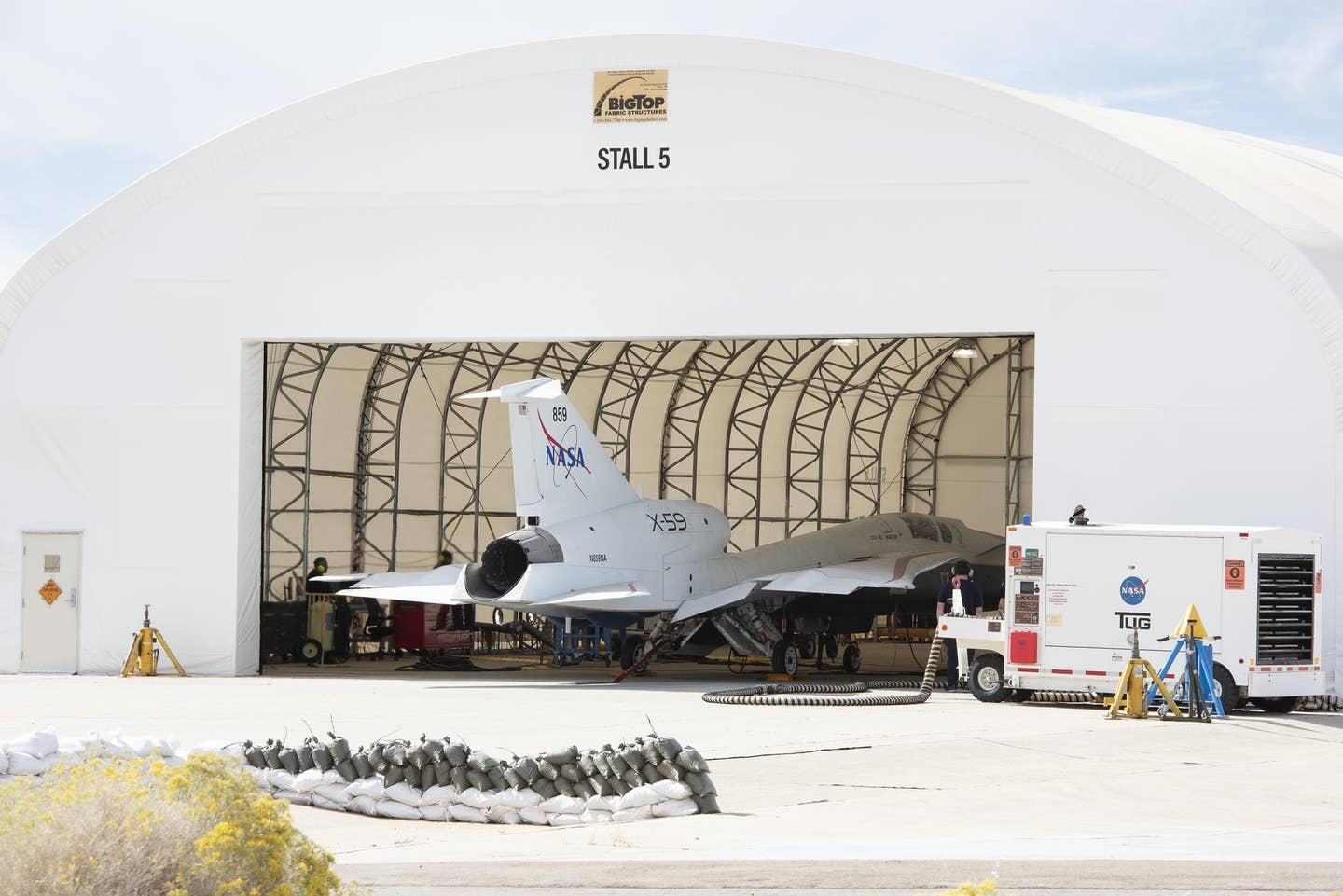NASA Begins Engine Tests on Experimental X-59
Supersonic research aircraft’s powerplant fired up for the first time at Lockheed Martin’s Skunk Works facility in Palmdale, California.

NASA’s X-59 quiet supersonic research aircraft sits in its run stall at Lockheed Martin’s Skunk Works facility in Palmdale, California. [Credit: NASA/Carla Thomas]
NASA has fired up the engine of its experimental X-59 supersonic aircraft for the first time, marking the launch of testing to ensure the powerplant and systems work together.
The one-of-a-kind X-59 Quiet SuperSonic Technology (QueSST) aircraft is part of NASA’s Low Boom Flight Demonstration project aimed at collecting data to help shape regulations for possible future commercial supersonic flight over land 50 years after it was banned by the FAA due to the noise of the sonic boom.
The modified F414-GE-100 engine is expected to enable the aircraft to fly Mach 1.4, or around 925 mph, according to NASA. It sits on top of the aircraft, which according to the agency, makes it quieter.
The engine test, which will be conducted in phases, began October 30 at Lockheed Martin's Skunk Works facility in Palmdale, California, NASA said.
"In this first phase, the engine rotated at a relatively low speed without ignition to check for leaks and ensure all systems are communicating properly,” the agency said in a statement. “The team then fueled the aircraft and began testing the engine at low power, with the goal of verifying that it and other aircraft systems operate without anomalies or leaks while on engine power."
Following the initial warmup phase, the first engine start then took the powerplant out of "preservation mode"—a state it had been in since it was installed in the aircraft, according to Jay Brandon, NASA’s X-59 chief engineer.
"It was the first check to see that it was operating properly and that all the systems it impacted—hydraulics, electrical system, environmental control systems, etc.—seemed to be working," Brandon said.
Following the engine tests, the aircraft will then begin aluminum bird testing and taxi tests, followed by preparation for its first flight, NASA said.

Sign-up for newsletters & special offers!
Get the latest FLYING stories & special offers delivered directly to your inbox






